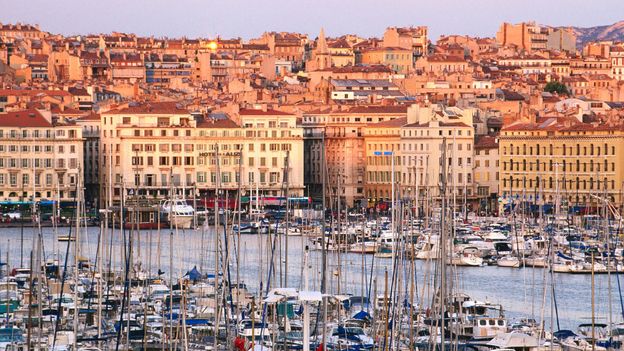Arriving at the Marseille-Saint-Charles station, visitors are treated to a view from its lavish, elevated forecourt that feels strikingly far-flung. Casting my eyes down an ornate 1920s staircase, my gaze followed the Boulevard d’Athènes, a sloping street where orange-tiled rooves overhang fawn stone walls. The route dipped as it met with the main thoroughfare, Rue Cannebière, before rising crescendo-like to the Notre-Dame de la Garde, a hilltop basilica crowned by a golden Virgin – the city’s highest point, shining like a holy lighthouse out to sea.
Notwithstanding the decline in sea freight and other industries, the Vieux Port remains the city’s focus, its waters dotted with yachts bobbing like swans on a lake. All roads seem to lead there, and anyone attempting to explore the city on foot inevitably ends up in one of the waterfront brassieres. In my case, it was the Beau Rivage Café, where, over late-afternoon pastis, I attempted to absorb the scene: the castle-like, 1,500-year-old Abbaye St-Victor, Marseille’s oldest church; and the swanky Hotel Dieu that, during the plague, served as a lazaretto – an isolation hospital for sailors to quarantine in. Now the InterContinental Hotel Marseille, guests enjoy a five-star spectacle over the water, which to my mind rivals the great harbours of the world, Hong Kong or Sydney, and one sorely overlooked.
For the detractors, Marseille doesn’t fulfil their “Parisian” vision of France in the ways that regal Lyon, its closest rival to second-city status, does; or by fans of neighbouring Aix-en-Provence, whose chic, conservative denizens have helped it earn “the 21st arrondissement of Paris” moniker.


